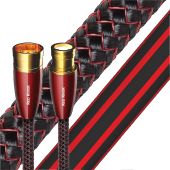AudioQuest - Red River - Bulk Interconnect Cable (Spool)
Discount:
Shipping:


AudioQuest - Red River - Bulk Interconnect Cable (Spool)
Enhance your audio system with the high-performance AudioQuest Red River Bulk Interconnect Cable. Designed for custom installations and DIY enthusiasts, this cable offers exceptional signal transfer and fidelity, making it perfect for creating your own tailored audio connections. The Red River Bulk Interconnect Cable features solid conductors made of Perfect-Surface Copper (PSC), ensuring optimal conductivity and minimizing signal loss. With its precision-engineered RCA connectors and advanced geometry, this cable provides a clean and reliable connection between your audio components.
Not only does the Red River Bulk Interconnect Cable deliver superior audio quality, but it also features AudioQuest's innovative Triple-Balanced Geometry. With a dedicated ground-reference conductor and three high-quality conductors, this cable ensures superior performance and low distortion. The separate ground conductor eliminates the need for the cable's shield to act as an inferior conductor, resulting in cleaner and more accurate audio signals.
In addition to its exceptional performance, the Red River Bulk Interconnect Cable offers flexibility and durability. The cable is available in various lengths, allowing you to customize the cable length to your specific installation needs. Upgrade your audio system with the AudioQuest Red River Bulk Interconnect Cable and enjoy immersive sound with enhanced clarity and precision.
FEATURES:
- High-performance bulk interconnect cable for custom installations
- Solid conductors made of Perfect-Surface Copper for optimal signal transfer
- Precision-engineered RCA connectors and advanced geometry
- Limited, Lifetime Manufacturer's Warranty


